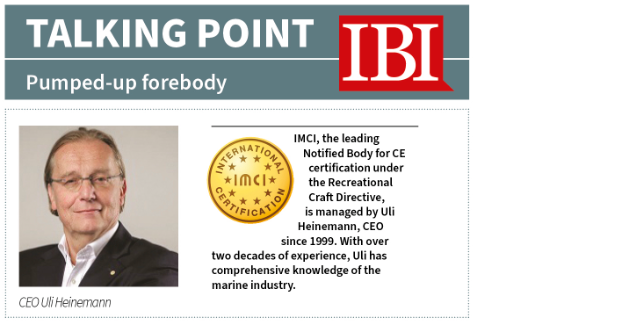TALKING POINT on IBI
Pumped-up forebodySailing enthusiasts may have noticed while strolling through the winter season boat shows that many sailing yachts, especially those primarily designed for charter purposes, have radically changed their bow lines.
The waterlines have become fuller, the block coefficient has increased. I would not go so far as to call it already a scow-bow, but the trend towards more rounded waterlines persists. It seems that sharp or straight waterlines are less fashionable in the forebody.
Where does this come from?
The boats participating or having participated in long-distance regattas, such as the Mini-Transat or the Vendée Globe, have demonstrated superiority in terms of speed with such bows compared to the sharp-cut boats. After all, these races are sailed mainly on a broad reach or downwind course, and a fuller bow helps these racers get into planing mode earlier. These boats only occasionally go upwind. From this perspective, the new lines make sense.
Furthermore, shipyards can accommodate significantly wider forward cabin berths, which may even be accessible from the sides, in their general plans. This is certainly a comfort advancement and stimulates sales. Additionally, more space is gained forward of the mast on deck, which is advantageous not only for sunbathing but also during harbour manoeuvres.
A win-win-win situation?
Perhaps. Assuming that the charter customer also prefers to utilize the above-mentioned area of the polar diagram, the calculation certainly works out. After all, one should not start a voyage close-hauled!
If the sailor, however, has to beat to windward for a longer period, it can quickly become uncomfortable. After all, in steep waves, the windward speed decreases, and the upwind angle becomes larger.

